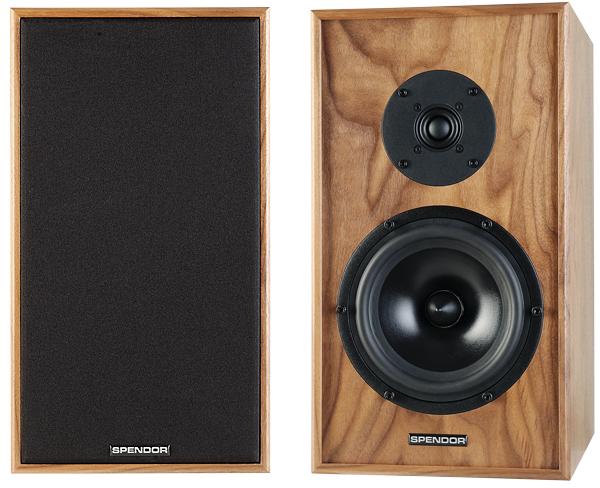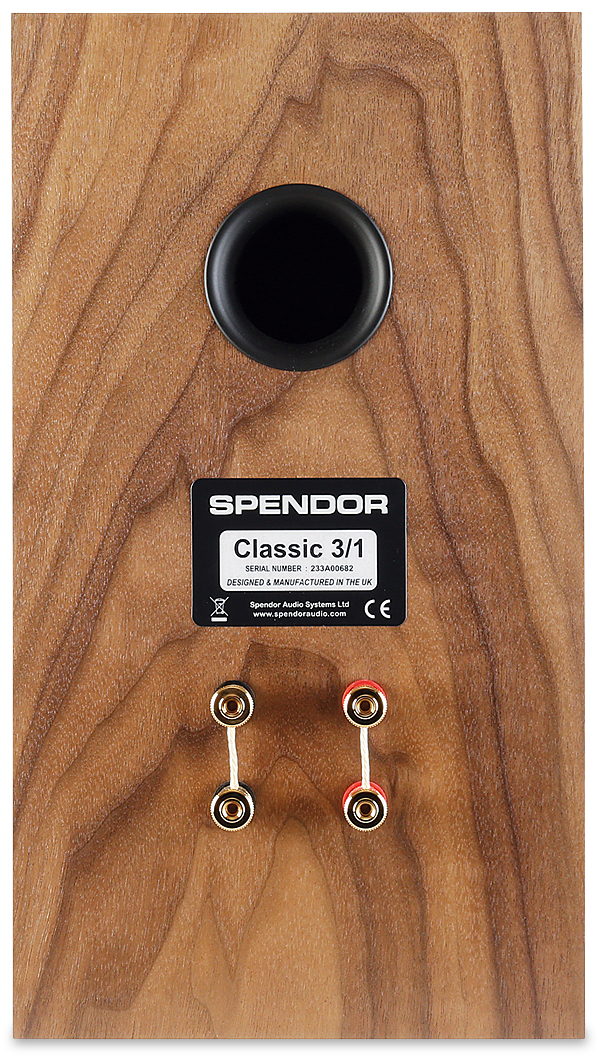Spendor Classic 3/1 Loudspeaker

 There are three two-way standmounts in Spendor's 1970s-inspired Classic range, and the 3/1 is the centre model. Is this entirely UK-built model the sweetspot of the series?
There are three two-way standmounts in Spendor's 1970s-inspired Classic range, and the 3/1 is the centre model. Is this entirely UK-built model the sweetspot of the series?
Rather than follow tradition in everything it does, Spendor has wisely divided its loudspeakers into different categories. The company's A-Line and D-Line models aim to reflect changes in consumer tastes by combining fresh in-house design thinking with engineering philosophies it has spent years refining. Alongside these sits the Classic Series which, as the name suggests, sees the brand build upon proven technologies from its earliest days with an eye to keeping the flame of its renowned '70s designs alive.
The £2730 Classic 3/1 is the second smallest member of the Classic Series and one of three two-way models in the range. What defines the 3/1 as a Classic (and every other member of that lineup) is its cabinet. Where the models in the A-Series and D-Series feature an extensively braced enclosure with a relatively narrow front baffle, the 3/1 has a cabinet whose sides are comparatively thin. This is allied to a wider baffle which is proportionally thicker.
Dead Heat
The result is a cabinet that's subject to controlled damping rather than an attempt to make it wholly inert – an impractical ambition at this price, anyway. Spendor's approach finds viscoelastic damping pads adhered to the panel walls, converting a proportion of this unwanted vibration into heat. The brand maintains that this controlled release of energy is critical to the overall performance of the speaker.
Mounted to the front baffle are a 22mm fabric dome tweeter and a 180mm mid/bass driver, both of which are built in-house. The tweeter can be found in a large number of Spendor designs and key to its operation is the presence of a large rolled surround around the dome. The surround is integral to the dome's dispersion, improving its behaviour as it heads towards the crossover point at a relatively high 3.7kHz. Meanwhile, the tweeter itself is placed in an extremely shallow waveguide.

The 180mm mid/bass unit adheres to the longstanding tradition of Spendor drivers by being made from what the company calls EP77 ('EP' standing for 'Engineering Polymer'). The exact composition of this material is something Spendor keeps to itself, but the design of the unit here is derived from the mid/bass driver used for the flagship speaker in the Classic Series, the 200TI [HFN Oct '19]. Yet while the cone is similar, it now sports a revised surround and a 180mm pressure die-cast alloy chassis with a new suspension system. Also, this relatively large driver is augmented by a rear port, making the 3/1 the smallest member of the Classic Series to be reflex-loaded and the only one not to have that port at the front.
As well as that relatively high handover point between the two drivers, the focus of Spendor's two-way crossover design has been the blending of reasonable sensitivity with a benign impedance trend. Spendor is the first to point out that there's nothing truly exotic going on here, with precision-wound inductors and high-linearity plastic film capacitors the order of the day. Perhaps what is relatively unusual in current times is that the Classic 3/1 can be bi-wired or bi-amped via two pairs of sturdy speaker terminals – a feature that was also present on the company's original BC1 [HFN Sep '10] from the mid '70s.
Keeping Its Cool
Aesthetically, the 3/1 certainly lives up to its 'Classic' branding. If you're looking for swooping curves, contemporary colour schemes and other up-to-the-minute detailing, you have very much come to the wrong place. Yet here lies an irony, for by studiously ignoring modern styling the Classic Series finds itself on trend thanks to the current enthusiasm for retro-styled equipment. It looks – dare I say it? – cool.
There is an honesty to this Spendor loudspeaker that has great appeal, and this is boosted by the very high standards of build here. As well as the walnut finish pictured, a cherry veneer is also available. Removable grilles are supplied and the 3/1 and the rest of the Classic Series now use magnetic tabs to negate the need for mounting holes in the front panel.
Mention also has to made of the dedicated stands that are available for the speakers. At £995 per pair they certainly aren't cheap, but they match the design of the 3/1 perfectly and support it at the corners of the cabinet. Once it was established that these stands enabled the loudspeakers to be heard at their best they were used for the entirety of the listening.
![]() Whole Number
Whole Number
The fundamental user friendliness and self-effacing quality of this design never interferes with its ability to turn in a performance that's genuinely emotionally engaging. 'Fuel To Fire' on Agnes Obel's 2013 album Aventine [Play It Again Sam PIASR615CDX] is a deceptively simple piece, but what the 3/1 does so effectively is to stitch the little details in the recording into one glorious and believable whole.
























































